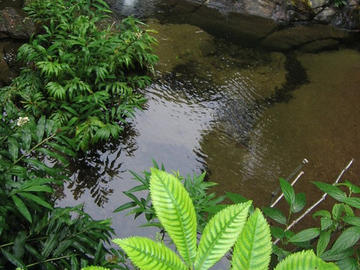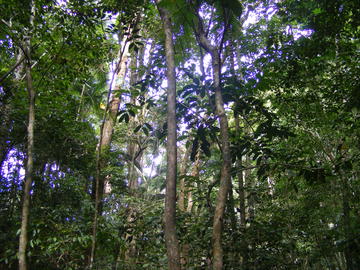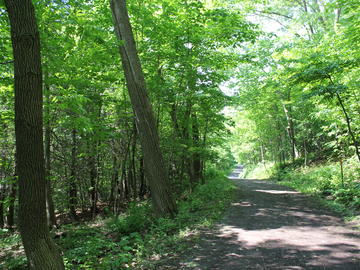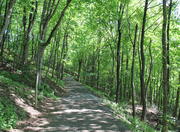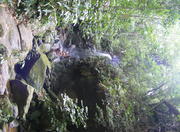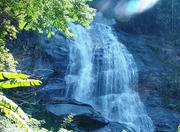Picture
More information on Parque Nacional da Tijuca in Rio de Janeiro

Description: Parque Nacional da Tijuca in Rio de Janeiro
The Tijuca National Park is located in the city of Rio de Janeiro, Brazil. Among the sights of the park, trails, caves and waterfalls, are famous landmarks such as Sugar Loaf, Corcovado, and Tijuca Peak, the highest point of the park, rising 1,022 meters above the March [1] In mountainous terrain, including areas of the Tijuca Massif. It is administered by the Chico Mendes Institute for Biodiversity Conservation (ICMBio).
The park is open daily from 8 to 17h, and up to 18h in summer. His many roads allow to visit it on foot, bicycle, motorcycle, auto and bus. To know the Statue of Christ Redeemer and the spectacular viewpoint of Corcovado, are also offered the option of train travel with the Corcovado Railroad Station, which begins at the station at Rua Cosme Velho. Several tour companies are circuits in the park in special vehicles. Also helicopter, the Tijuca Forest National Park can be seen, and you can hire a scenic flight area Mirante Dona Marta.
As a result of floristic changes undergone by the past 400 years, and the lack of connection with other forests, the park does not have all the animals that characterized places like the Atlantic slope of the Serra do Mar. The majority of wildlife hides Visitor or has nocturnal
Tijuca Forest
Located in the heart of the city, just minutes from most of the neighborhoods of Rio, a beautiful urban forest, which was partially replanted and developed over the years by natural processes of ecological succession in an area of about 3,200 hectares, has great advantage of merge hundreds of species of fauna and flora found only in the Atlantic. The Tijuca Forest has nooks and historical attractions worth visiting, such as the Waterfall, the Mayrink Chapel, the Excelsior Lookout Point, the Shed, the Paul and Virginia Grotto, Fairy Lake, the Chinese Pavilion and the Solitude Dam, points frequented by whole families on weekends.
History
The Tijuca Forest was reforested in the nineteenth century after years of deforestation and intensive cultivation (mainly coffee). Reforestation has been a pioneer in Latin America.
The person responsible for reforestation, appointed by Emperor Pedro II in 1861, was Major George Archer, the first administrator of the forest that worked initially with six slaves and, later, with 22 employees, in 13 years by planting 100,000 saplings. The replanting was done with species, mostly native to the Atlantic Forest Ecosystem.
The second administrator, Baron Gaston d'Escragnolle continued replanting from 1874 to 1888. Besides introducing over 30 000 seedlings, a transformative work in the forest recreation area, a park for public use, including exotic species, creating bridges, fountains, ponds and leisure facilities with the aid of French landscape Augusto Glaziou.
Even in the nineteenth century, the painter Nicolas Antoine Taunay resident and landowner in the forest, its natural beauty that portrayed are historical documents of the city of Rio de Janeiro.
The painter received his friends and courtiers in his house, thus making the beauties of the forest known to Brazilians and foreigners who came to visit him.
In the twentieth century, Raymundo Ottoni de Castro Maya, managed the forest from 1943 to 1946, he raised the park, which had been forgotten during the early Republic.
In partnership with the architect Vladimir Alves de Souza and the landscape artist Roberto Burle Marx, Castro Maia regained forest receiving a cruise (symbolic) as payment for his administration.
In terms of recovery of the forest were introduced works of art, buildings and places. Were also deployed and health services. Restaurants were opened and the Chipmunks Forest (using the premises of the old farms of coffee - the restaurant was opened in Forest former slave quarters of a farm). The Brazilian Equestrian Society was established in the former home of Lord of Bom Retiro. Many farmers and landowners - like the Count Gestas, Baron de Mesquita, Counselor Mayrink, Midosi William, Viscount Asseca, besides those already mentioned above, and professionals such as Job and Alcantara Luiz Fernandes, slaves Eleuthério, Father Ricardo and Father Antonio and other illustrious patrons, left their names in the history of the park in the hills, roads, paths, caves, waterfalls etc..
The forest became then a privileged place where nature and culture are intertwined, harmonize and complement each other.
Address: Praça Afonso Viseu, Alto da Boa Vista - Tijuca
http://www0.rio.rj.gov.br/riotur/pt/atracao/?CodAtr=1962
More Photos of Picture
